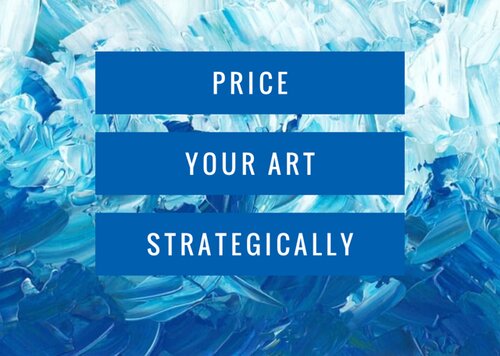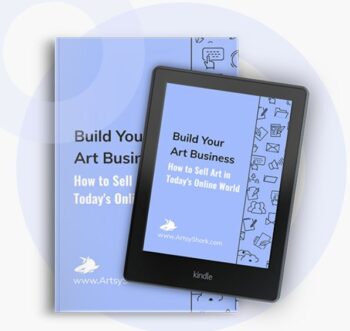by Carolyn Edlund
Here’s how to use pricing strategies that work for your collectors as well as your own art career.

It can be challenging to put a price tag on your creative work, but as an artist in business you must know the value of what you make and how it fits into the marketplace. This keeps your business going at a sustainable level to allow you to continue to make your art or handmade work into the future.
Affordable prices
If you’re just getting started, or feel unsure about your current price structure, consider that you will need a price point spread to reach the maximum number of potential customers. Creating affordable options doesn’t mean that you are undervaluing your own work. Instead, it can be a bridge to connect with art lovers who may become lifelong collectors.
Original art is wonderful and many collectors prefer to purchase it. However, selling reproductions of your work is a great way to leverage your existing body of work. It also allows you to expand your offering to appeal to a range of buyers with different pocketbooks who love what you make.
Reproductions, commonly known as prints, can offer a perfect way to make your work affordable while maintaining its value. Consider first whether offering limited or open editions best serve your goals:
Open editions
Keeping your stock of reproductions “open” allows you to sell as many prints as the market demands. This approach maximizes income potential on artwork that is very popular. Many successful artists maintain open editions of their bestsellers for years, creating a reliable income stream.
Limited editions
Should you limit print editions? This strategy is often used to create a sense of scarcity, thereby increasing demand, but can work against you by capping your earning potential. Limited editions often work well for artists with a good sales history and an established collector base willing to pay premium prices for exclusivity. For newer artists without a lot of selling experience, open editions often make more business sense until you’ve built enough demand to justify limited runs. The “limited” aspect adds value when there’s already significant interest in your work.
Whether you decide to offer limited or open editions (or some of each), include a certificate of authenticity with each purchase. This should include your signature and a brief description. For limited editions, include the print number. This document adds professionalism, verifies authenticity, and increases the perceived value of your art.
Small works
Small doesn’t mean less valuable—but it can mean more collectible. You can still earn on a consistent basis with lower price points that have big appeal. These could be a dedicated series of small artworks that are priced at about 30-40% of your standard rates so that collectors can own an original work of art by you without breaking the bank. Or, develop sketch collections/studies for originals that can be sold at affordable prices, and have value in themselves.
The perfect time to release these lower priced groupings would be near holiday seasons when people are actively looking for special items in a gift price point range. They can drive regular income while introducing people to your work and interesting them in future collecting.
Keep pricing consistent
How you price your art sends powerful messages about your work’s value and your credibility as an artist. Your prices should tell the same story everywhere your art appears. Keep the prices for your work consistent across your website, social media, galleries, and art fairs. Document your pricing history so you can explain your current rates to interested collectors, and defend your prices in meetings with galleries. Additionally, you can put together a unified pricing sheet that galleries and clients can reference.
Consistent prices drive confidence in your brand. When collectors are confronted with inconsistent pricing, it creates confusion and damages trust. If they see prices vary at different times or in different places, they may believe you have overcharged them. Additionally, gallery relationships may suffer if you undercut them with similar work being sold on your website or direct to customers. In that event, you can expect to be dropped by galleries that learn what you are doing.
Time your price increases
Your prices should grow with your career, but increasing prices shouldn’t be done arbitrarily. If your prices have been static for a while, it’s reasonable to raise them after significant achievements. This includes solo exhibitions, important awards, or gallery representation.
For emerging artists, annual increases of 10-15% are reasonable when your work is selling well for a period of at least six months. More established artists typically implement smaller increases of 5-10% to maintain collector relationships. Always communicate price changes transparently, giving loyal collectors advance notice—perhaps with a chance to purchase at current prices before the increase.
Find your sweet spot
The perfect price point exists where your work sells steadily. If sales are very brisk, your prices may be too low, whereas if nothing is selling for months, you might need to adjust downward or improve your marketing.
Pricing is an ongoing conversation between you and the marketplace for your art. By offering a range of prices with different types of products, you create multiple paths for collectors to begin and continue purchasing your art. As your career advances so too should your pricing strategy. It makes sense for prices to increase in alignment with your professional development and market position.




Speak Your Mind